斯坦福大学新技术可令太阳能转化效率翻番 成本堪比石油
发布时间:2010-8-3 10:21
发布者:嵌入式公社
|
斯坦福大学发现的新转换工艺有望彻底革新太阳能生产 斯坦福大学的工程师说,一种同时将光辐射和热辐射转变为电能的方式可使现在的太阳能电池技术的效率翻番。他们已经证明这种方法是可行的。该工艺称作光子增强热电子发射(photon enhanced thermionic emission),简称PETE,可降低太阳能生产成本,使之可与石油能源竞争。 现有光伏技术的太阳能面板在温度升高是转换效率会降低。新方法则不同,它的转换效率会变高。 “这是一种观念的突破,一种新的能源转换方式,而不仅仅是新材料或小改进,”研究小组领头人、材料科学和工程系助理教授Nick Melosh说。“它是一种跟不上不同的能量获取方式。” 制作这种设备的材料也很便宜并容易获得,这意味着生产的能源会比较廉价。描述该研究的论文已发表在《自然材料》杂志的8月1日网络版上。 "Just demonstrating that the process worked was a big deal," Melosh said. "And we showed this physical mechanism does exist; it works as advertised." Most photovoltaic cells, such as those used in rooftop solar panels, use the semiconducting material silicon to convert the energy from photons of light to electricity. But the cells can only use a portion of the light spectrum, with the rest just generating heat. This heat from unused sunlight and inefficiencies in the cells themselves account for a loss of more than 50 percent of the initial solar energy reaching the cell. 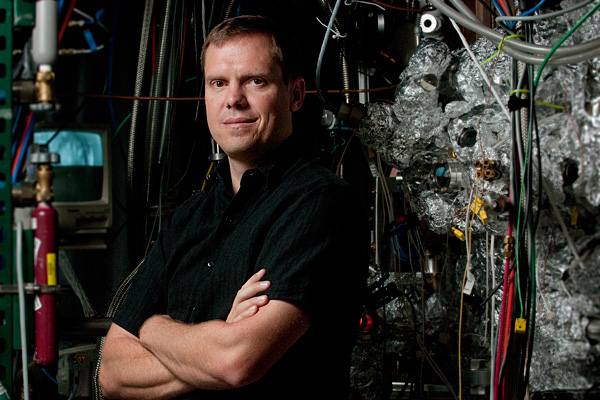
Nick Melosh, assistant professor of materials science and engineering, stands beside the ultra-high vacuum chamber used in the tests that proved the PETE process works. If this wasted heat energy could somehow be harvested, solar cells could be much more efficient. The problem has been that high temperatures are necessary to power heat-based conversion systems, yet solar cell efficiency rapidly decreases at higher temperatures. Until now, no one had come up with a way to wed thermal and solar cell conversion technologies. Melosh's group figured out that by coating a piece of semiconducting material with a thin layer of the metal cesium, it made the material able to use both light and heat to generate electricity. "What we've demonstrated is a new physical process that is not based on standard photovoltaic mechanisms, but can give you a photovoltaic-like response at very high temperatures," Melosh said. "In fact, it works better at higher temperatures. The higher the better." While most silicon solar cells have been rendered inert by the time the temperature reaches 100 degrees Celsius, the PETE device doesn't hit peak efficiency until it is well over 200 C. Because PETE performs best at temperatures well in excess of what a rooftop solar panel would reach, the devices will work best in solar concentrators such as parabolic dishes, which can get as hot as 800 C. Dishes are used in large solar farms similar to those proposed for the Mojave Desert in Southern California and usually include a thermal conversion mechanism as part of their design, which offers another opportunity for PETE to help generate electricity as well as minimize costs by meshing with existing technology. 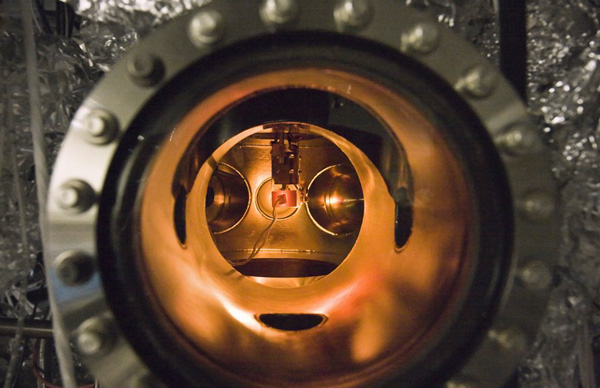
A small PETE device made with cesium-coated gallium nitride glows while being tested inside an ultra-high vacuum chamber. The tests proved that the process simultaneously converted light and heat energy into electrical current. "The light would come in and hit our PETE device first, where we would take advantage of both the incident light and the heat that it produces, and then we would dump the waste heat to their existing thermal conversion systems," Melosh said. "So the PETE process has two really big benefits in energy production over normal technology." Photovoltaic systems never get hot enough for their waste heat to be useful in thermal energy conversion, but the high temperatures at which PETE performs are perfect for generating usable high-temperature waste heat. Melosh calculates the PETE process can get to 50 percent efficiency or more under solar concentration, but if combined with a thermal conversion cycle, could reach 55 or even 60 percent – almost triple the efficiency of existing systems. The team would like to design the devices so they could be easily bolted on to existing systems, thereby making conversion relatively inexpensive. The researchers used a gallium nitride semiconductor in the "proof of concept" tests. The efficiency they achieved in their testing was well below what they have calculated PETE's potential efficiency to be – which they had anticipated. But they used gallium nitride because it was the only material that had shown indications of being able to withstand the high temperature range they were interested in and still have the PETE process occur. With the right material – most likely a semiconductor such as gallium arsenide, which is used in a host of common household electronics – the actual efficiency of the process could reach up to the 50 or 60 percent the researchers have calculated. They are already exploring other materials that might work. Another advantage of the PETE system is that by using it in solar concentrators, the amount of semiconductor material needed for a device is quite small. "For each device, we are figuring something like a 6-inch wafer of actual material is all that is needed," Melosh said. "So the material cost in this is not really an issue for us, unlike the way it is for large solar panels of silicon." The cost of materials has been one of the limiting factors in the development of the solar power industry, so reducing the amount of investment capital needed to build a solar farm is a big advance. "The PETE process could really give the feasibility of solar power a big boost," Melosh said. "Even if we don't achieve perfect efficiency, let's say we give a 10 percent boost to the efficiency of solar conversion, going from 20 percent efficiency to 30 percent, that is still a 50 percent increase overall." And that is still a big enough increase that it could make solar energy competitive with oil. The research was largely funded by the Global Climate and Energy Project at Stanford and the Stanford Institute for Materials and Energy Science, which is a joint venture of Stanford and SLAC National Accelerator Laboratory, with additional support from the Department of Energy and the Defense Advanced Research Projects Agency. |


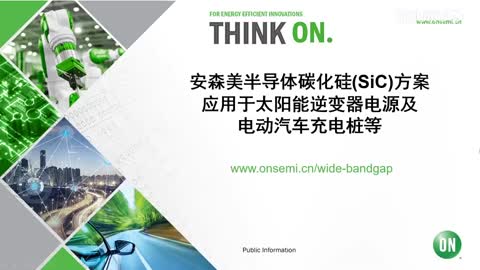


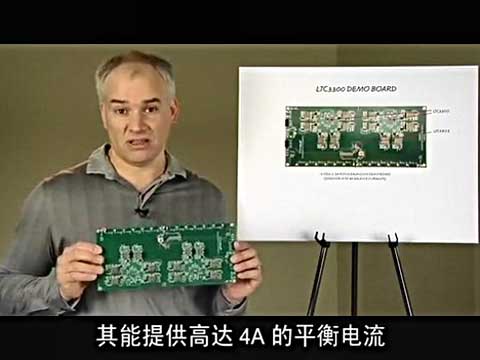
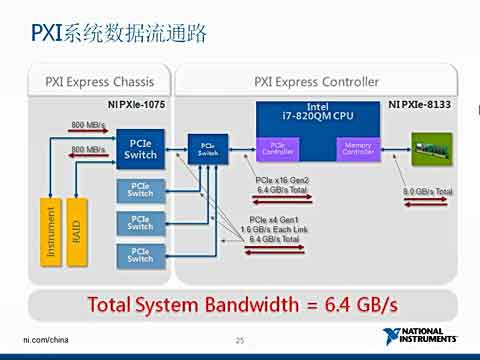
网友评论